2025 Ducati Panigale V4 Review - The Best Yet From Borgo Panigale?
With more power than before and a vastly revised chassis, the new Ducati Panigale V4 is claimed to be "nothing short of stunning"
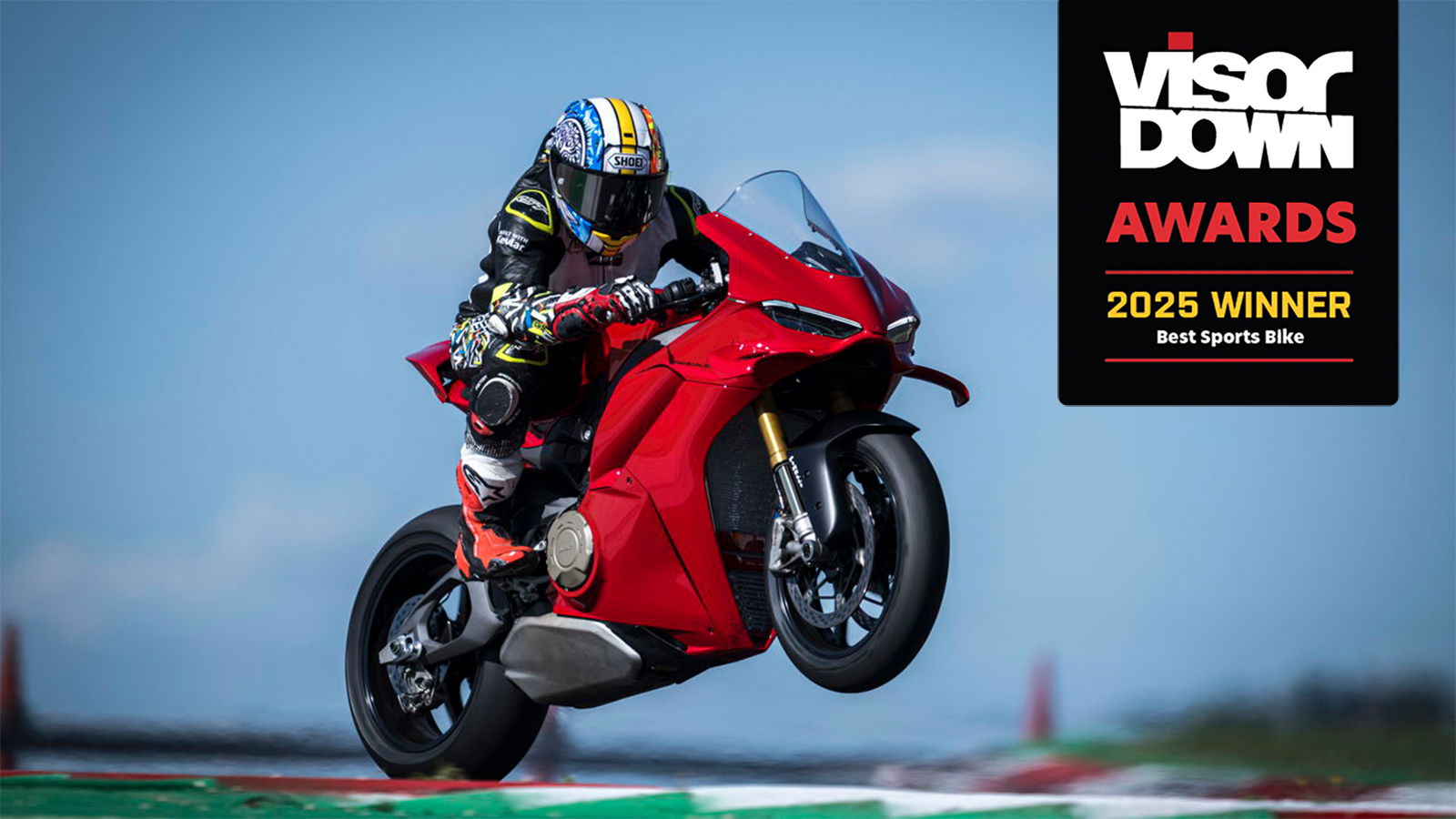
The Ducati Panigale V4 has, since its inception, been regarded by us here at Visordown as the superbike to choose if you want to go fast out of the box on track.
And it’s set to get even easier to go fast this year, as Ducati has just unveiled a fresh new Panigale V4 to allow us mere mortals to go even closer, as the latest superbike from Borgo Panigale looks like the ultimate two-wheeled weapon.

Launched at the annual bash at World Ducati Week 2024, the latest generation Panigale boasts a completely new look, with wings that integrate into the fairing and smaller, more slim headlights and air-intakes that seem to increase the aggressive demeanour of the bike. This is much more than a visual refresh though, and as we are about to explain, the new Pani’ G has had much more than just a nip and tuck!
What’s new with the new Panigale V4
One element of change with the new bike that might not sit well with the purists is the swingarm. Panigale V4s have continued a trend that started with the iconic 916 (which was only paused for the 749 and 999 models) and always worn single-sided units. The new single sider isn’t a styling mission though, with Ducati claiming a 3.8kg weight saving over the previous V4’s single sider. It also says there’s a 37 per cent reduction in stiffness thanks to the change - something that should improve corner traction and feel at high lean angles.

One element of the update which probably will go down well is the styling, because this latest bike is quite possibly the best looking of the V4 era. When the first V4 Panigale landed in 2018, winglets were reserved for MotoGP bikes only, and it took until 2020 for the bike to gain the same downforce-creating aero. They were, though, an add-on to the original 2018 bike’s fairing, and this generation features much more incorporated into the fairing of the bike.
Neater looking they definitely are, and Ducati is also claiming some aero gains have been grabbed in the process, with an aerodynamic drag reduction of four per cent being claimed by the factory, going on to say the rider should be kept in a ‘sort of "bubble" of calm air’.
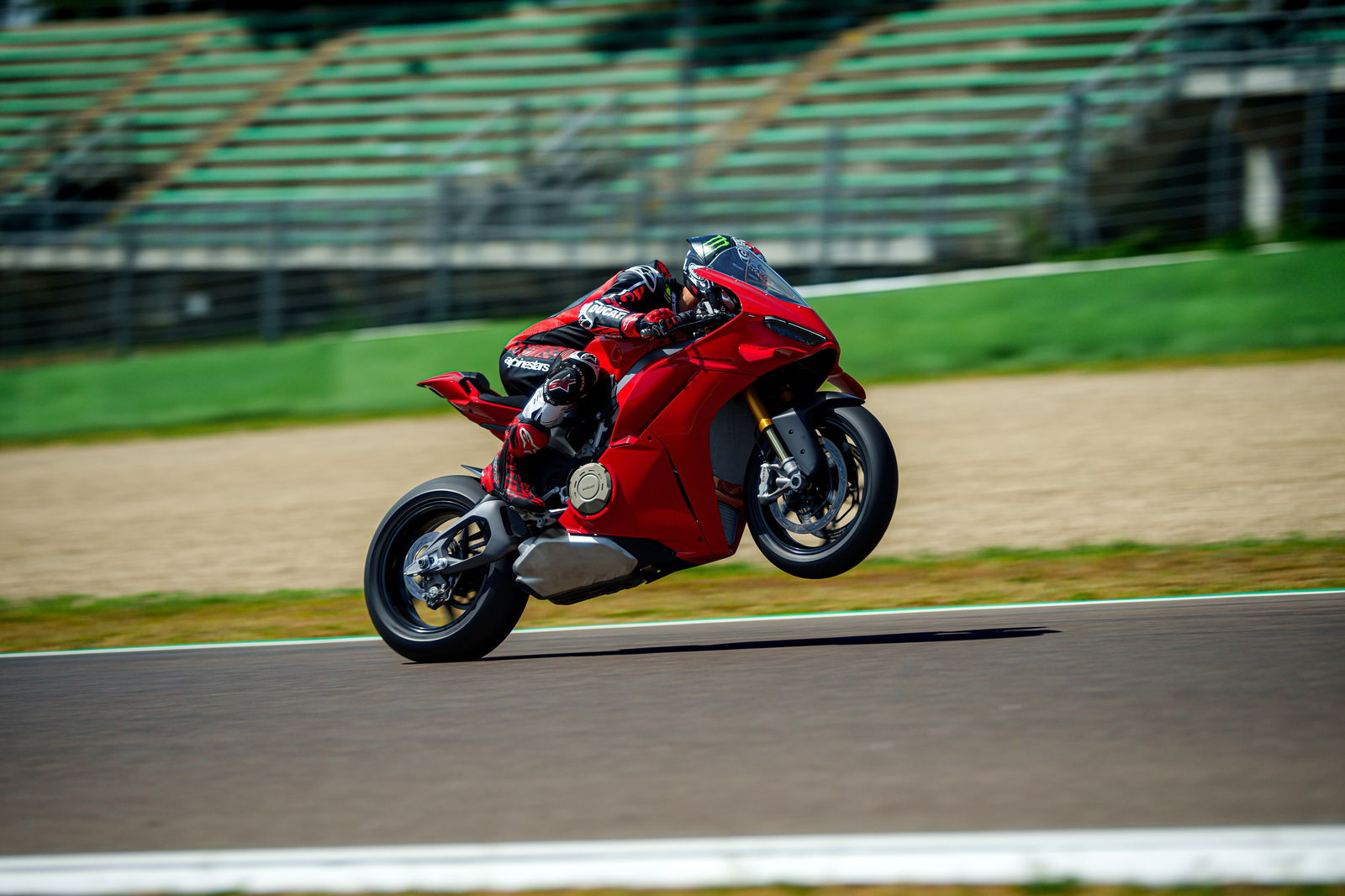
Onto the business end of the bike, the engine. It has since its launch been one of the most exciting pieces of petrol-powered engineering on two wheels, and that doesn’t look like changing for the new bike. Power gains aren’t huge, 216hp against the previous bike’s claimed 215.5hp, but it arrives 500rpm higher than before and the Desmosedici Stradale V4 unit is now a whole 1kg lighter than before. Should a measly 216 ponies not be enough for your novice group track day at Mallory Park, you could always opt for the track-only Akrapovic exhaust system. That’ll boost power to a claimed 225bhp - which should be enough to push you up into inters, or maybe the gravel trap!
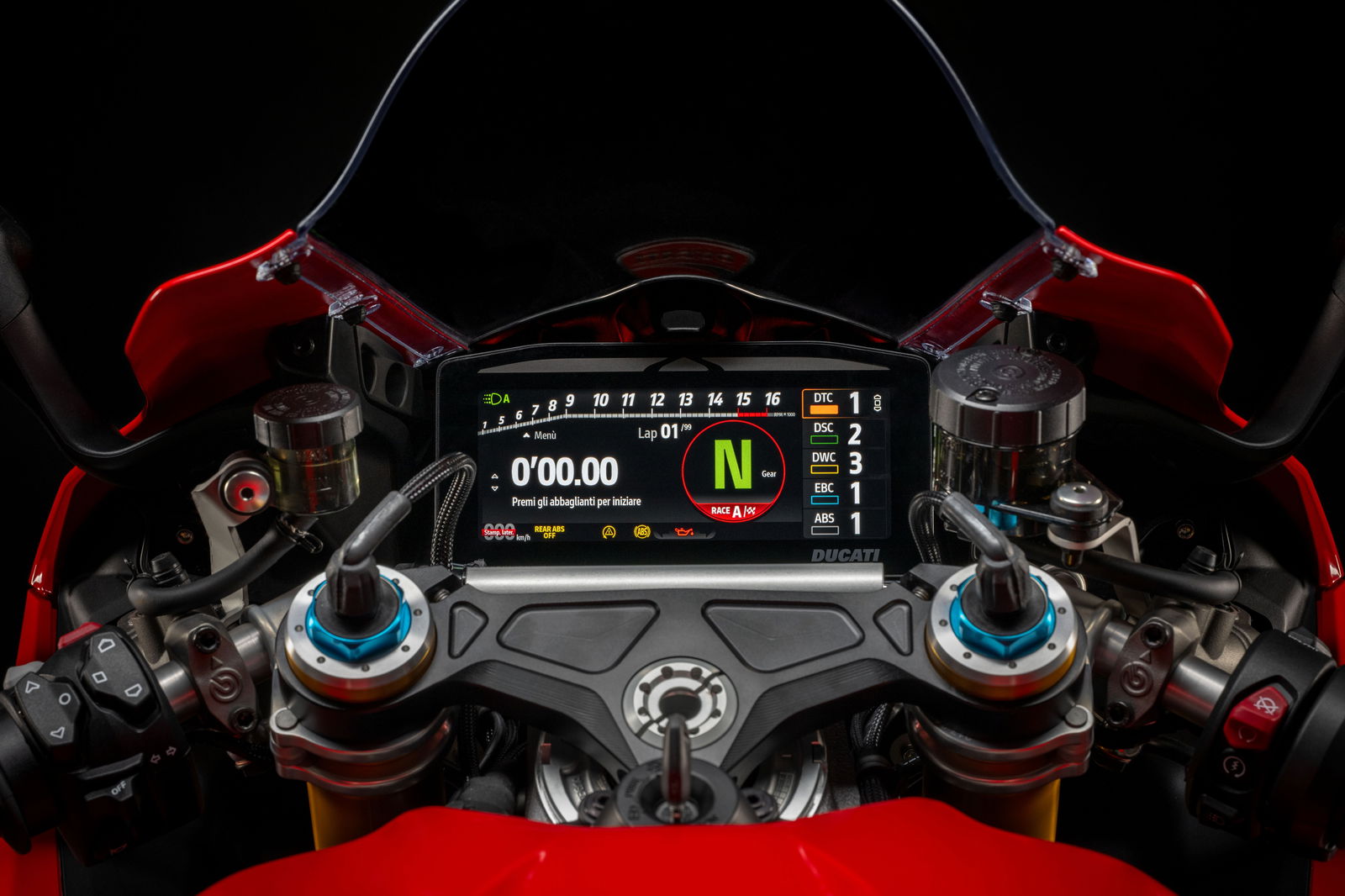
Suspension for the new bike still comes from the best in the business, with Ohlins chucking its latest spec electronically adjusted NPX-30 forks and a TTX 36 rear shock at the bike (if you opt for the V4 S version), while Brembo has brought its much talked about Hypure calipers to the party, to help gobble up some of that corner speed.
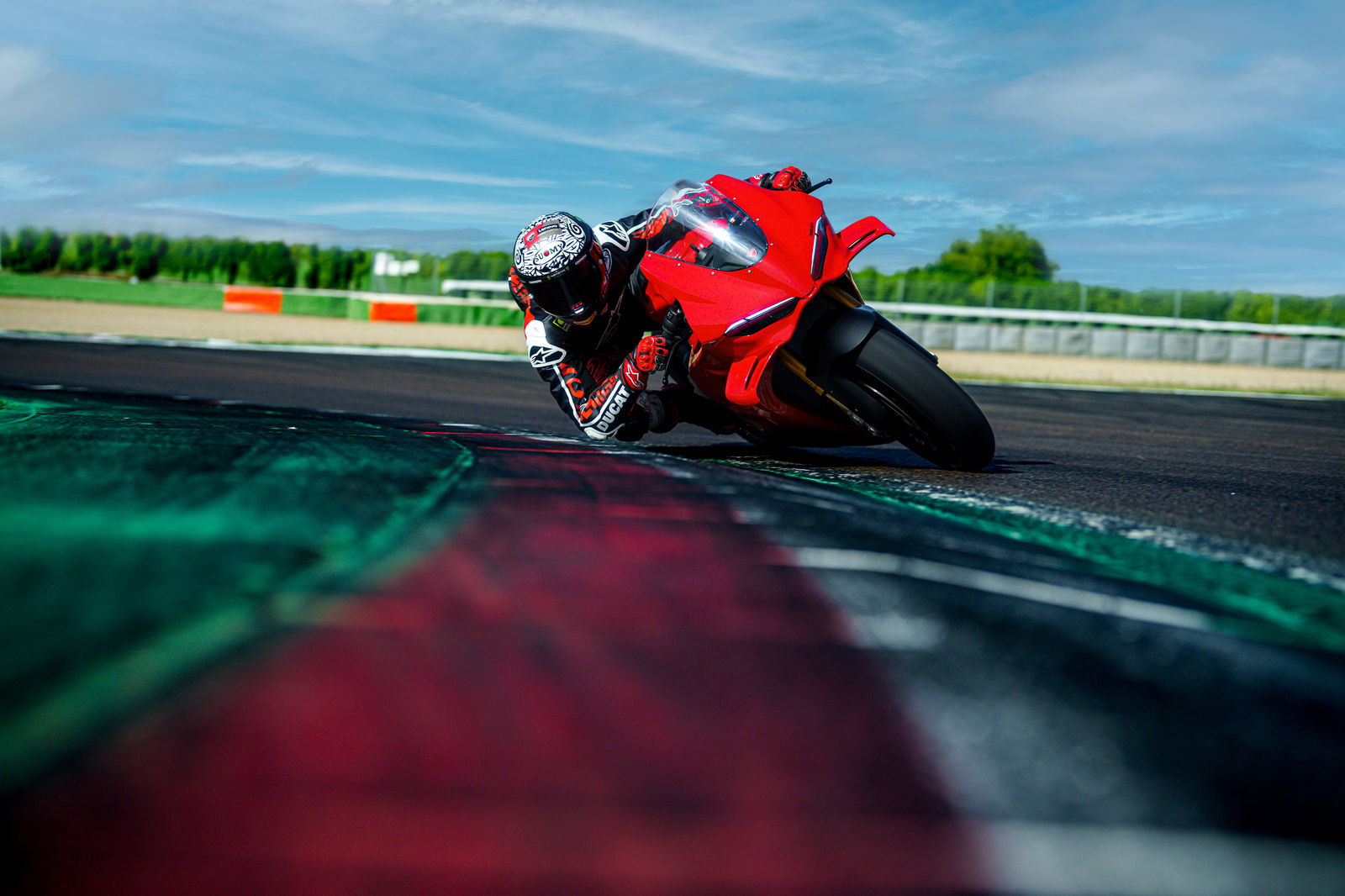
The new Panigale comes in two varieties, a standard bike, and the more trick (with electronic suspension) S version. The stocker will demand £24,395 from your account, while the one you want, the S model, comes in at £29,995.
What this all means to the riding experience remains to be seen and, with a host of new electronics, the Panigale is looking like quite possibly the spiciest proposition from the Italian manufacturer yet.
What's it like to ride
Tested and written by Adam Child ‘Chad’ for Visordown.com
Vallelunga might not have the glamorous image of Misano, Mugello or Imola, but it’s a good test track: fast in the first third; more technical and slower toward the end. To start with I opted for Race B and Medium power modes with the suspension in Active Track 2, one of five road and track modes available. Race B is like a ‘safe’ track mode, with most rider aids working but designed to work with high grip tyres.
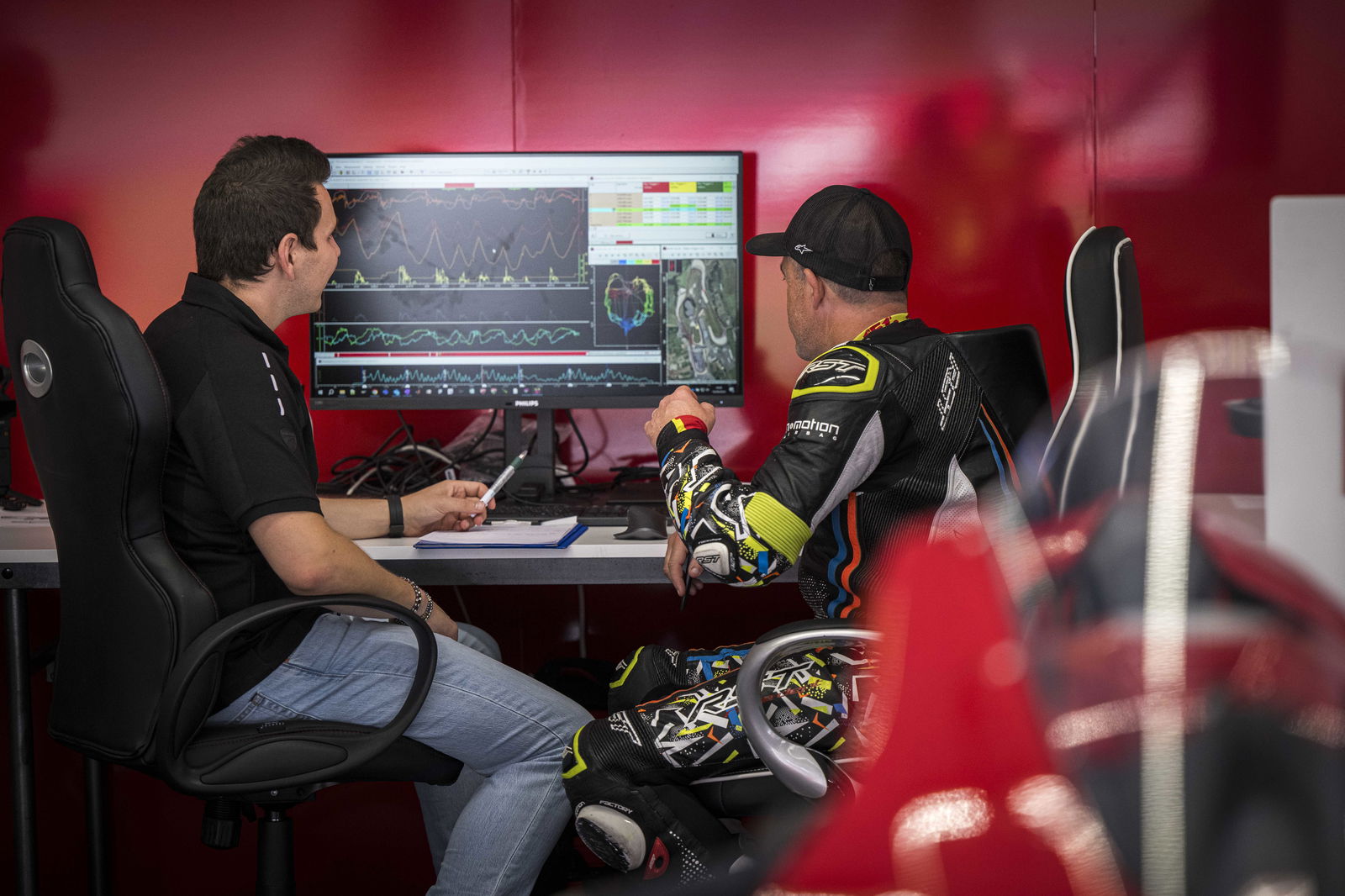
On lap three Alessandro gave me the nod to open up the Panigale for the first time. Over the line in third gear into the very fast, fifth-gear T2 (Curva Grande), then into T3, sill in fifth before braking for T4 and T5 (Cimini 1 and 2), taken in second gear. This section is rapid. I’m sure Ducati could have crammed more power to the familiar counter-rotating V4 but instead have simply tweaked the motor to a quoted 216hp/159kW @ 13,500rpm, which is 500rpm higher and just 1hp more. Quoted peak torque is down a fraction and up at a fraction in the revs. The up-and-down quick shifter, Quick Shift 2.0, is smooth and fast, and in race shift it’s just a case of keeping the throttle pinned, getting tucked in behind that taller screen, and only changing gear when the gear indicator lights illuminate on the new and pin-sharp dash. Like the old bike, it’s sense-scrambling quick and loves to rev.
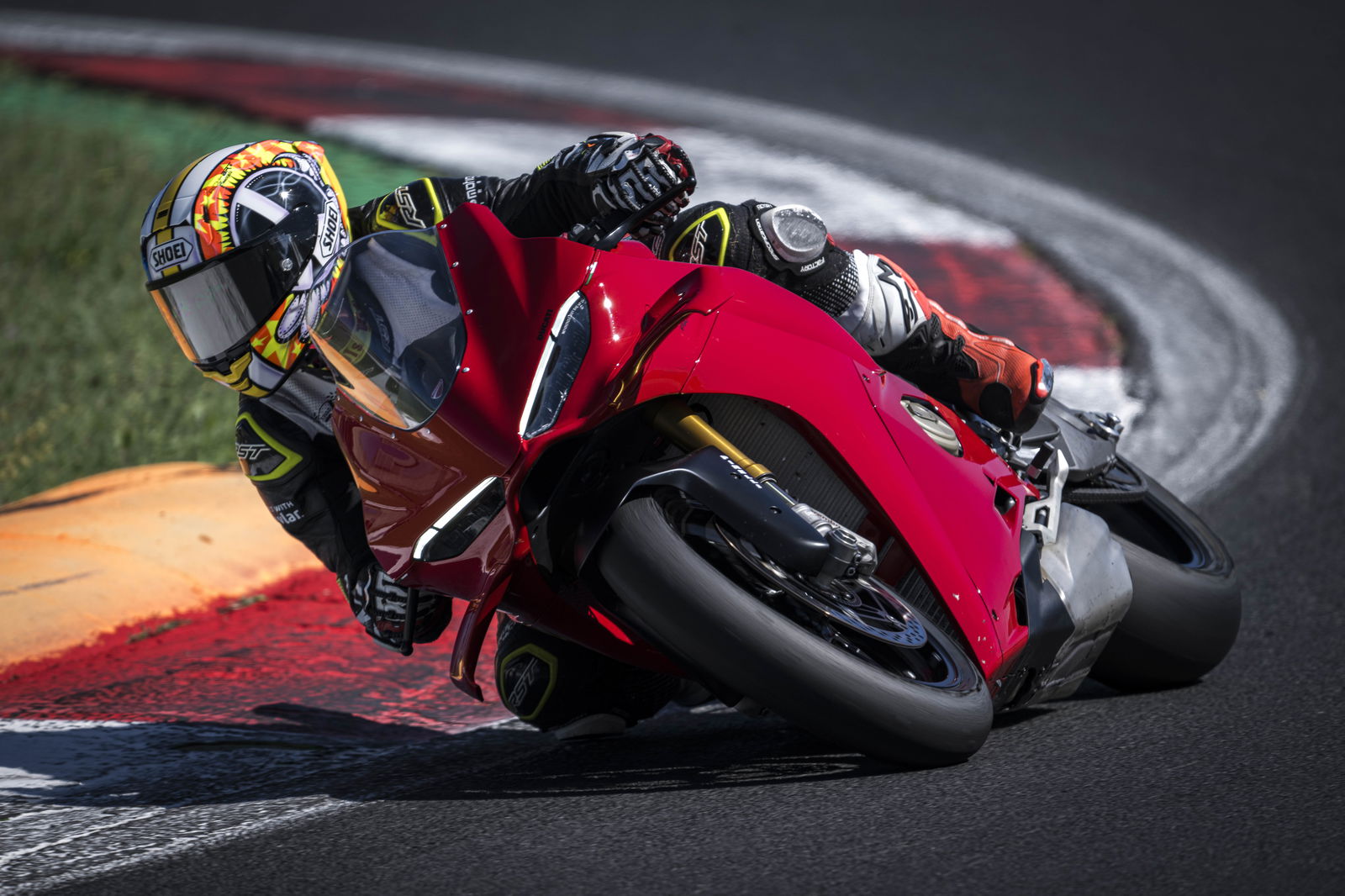
With my pace still building, the most obvious improvement over the older bike was its improved stability. The V4 S I rode in 2022 was planted enough but around Vallelunga, especially through a fourth-gear and fearsomely fast and committed kink, would gently weave or move the bars to indicate you were towards the limit, forcing me to short-shift through this section. The 2025 Panigale, however, was much more predictable and even in the first session I had more confidence to make full use of the power. This newfound stability might be down to extra flex in the frame and longer swingarm, or the new electronics, or a combination of everything, but from lap three the difference between the old and new bike was obvious.
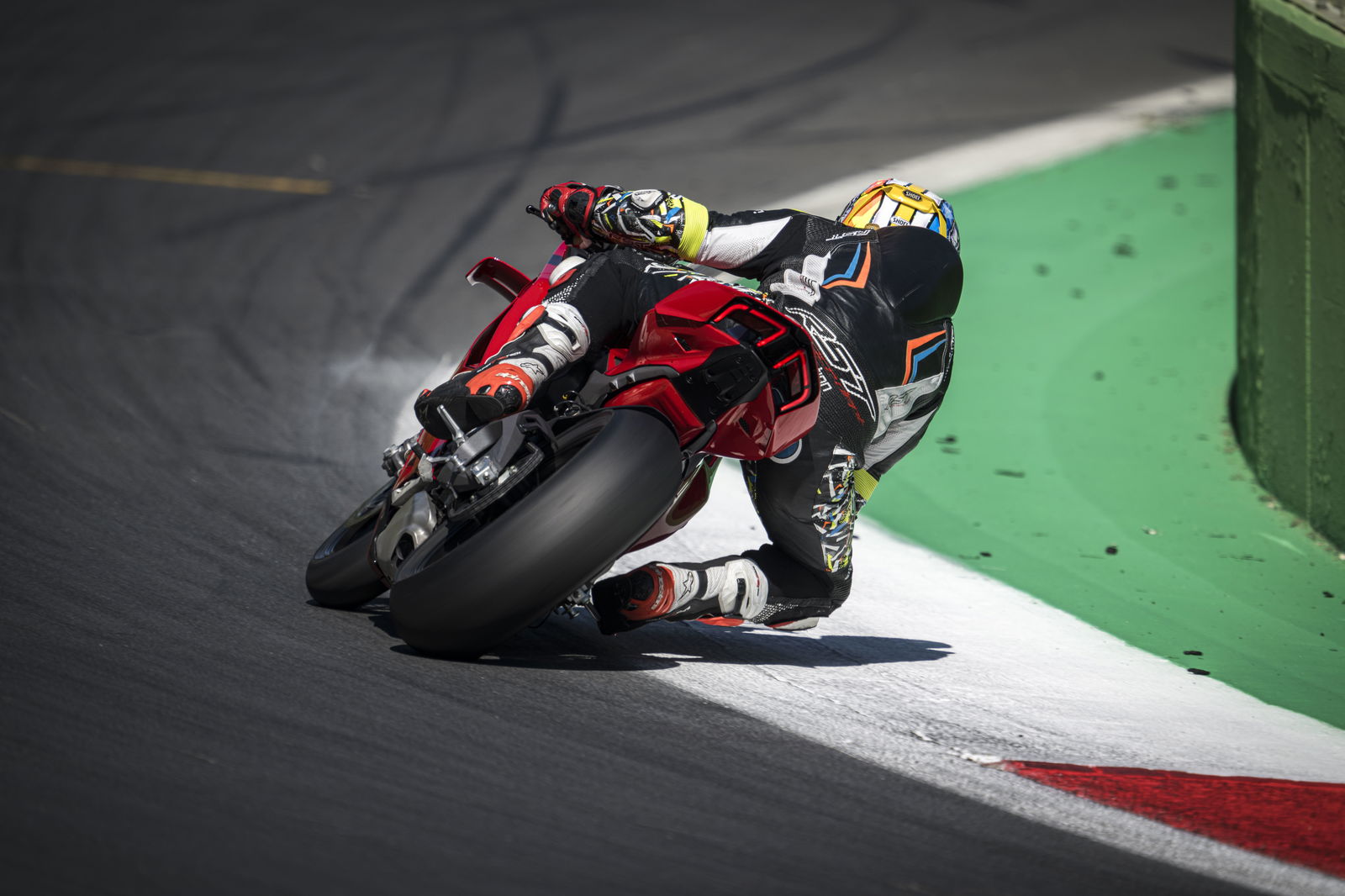
For session two, my Corse engineer, Francesco, and I opted for Race A mode, with High power (but still not Full power), and Active Track 1 suspension mode, which means the Öhlins units are still active but at a higher standard setting for the track. Slide control and wheelie control are also reduced but still active, while cornering ABS stays the same.

With my brain and body recalibrated to the initially disorientating speed of the bike, I could push on a little harder. The stability remained a highlight, each lap I had more confidence to hold onto the revs, hold onto the gear for longer and make full use of the power, rather than short-shifting or being gentle with the throttle to keep some stability like I did on the previous bike.
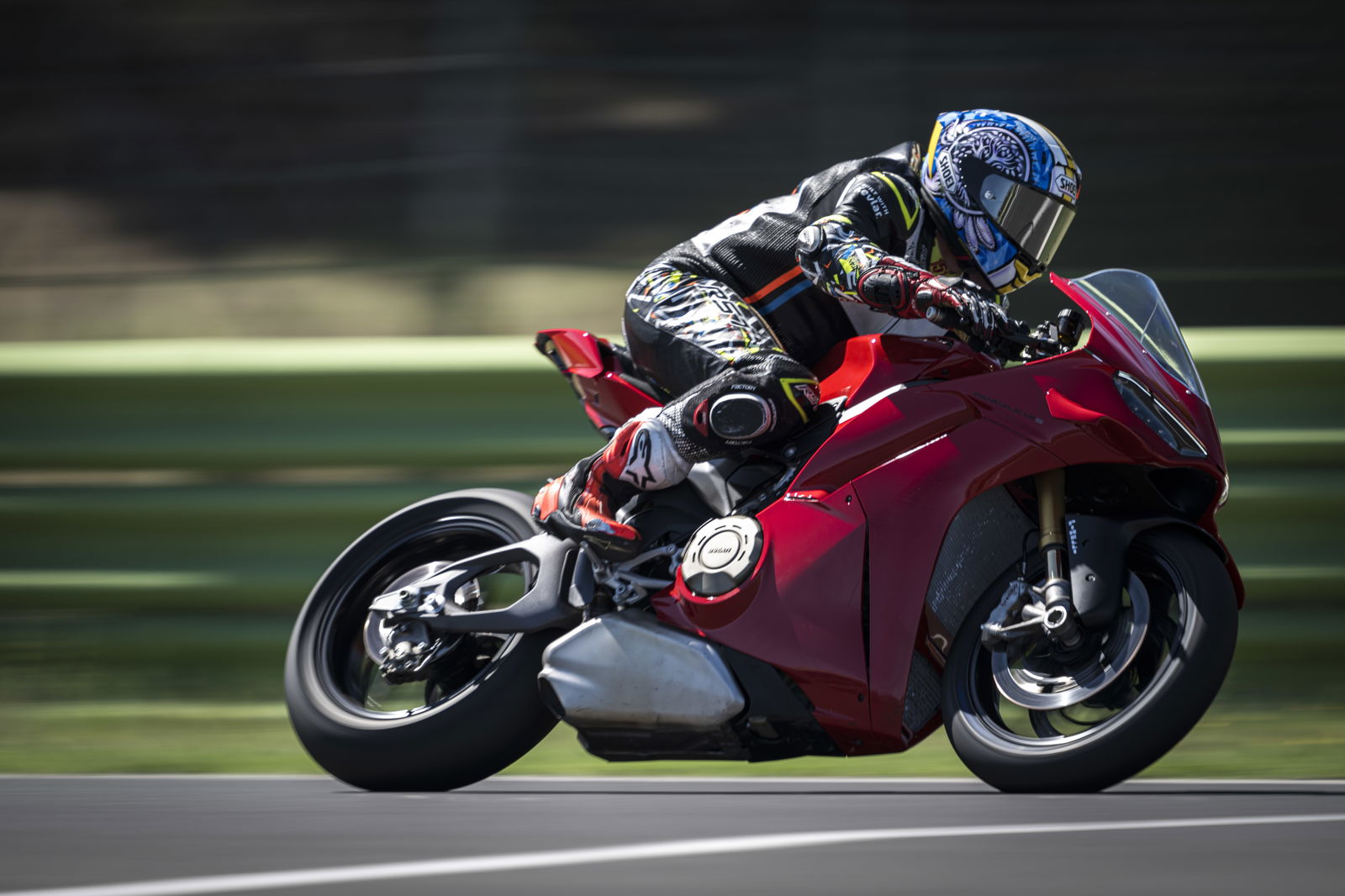
The same can be said for the rider aids and throttle delivery from low down. The end of the lap is tight and twisty with several second-gear corners and late apexes, followed by hard acceleration with potentially perilous lean angle – but again the new rider aids take care of everything, to the point you can be aggressive with the throttle, holding it to the stop, and simply allow the new Ducati Vehicle Observer (DVO) and rider aids take over. The throttle connection is all but perfect when you get on the gas, then it's just a case of winding on the power as fast as you dare and leaning on the rider aids. I don’t think I’ve ever exited a sequence of corners so hard and so early.
On occasion, I could feel the torque reduce as a slide or wheelspin were corrected, especially when exiting first and second-gear corners hard on the throttle. It's amazing what you can get away with and how unfazed and planted the Ducati remains, and that old cliché of a fast lap feeling more like a computer generated video game applies more aptly than ever.
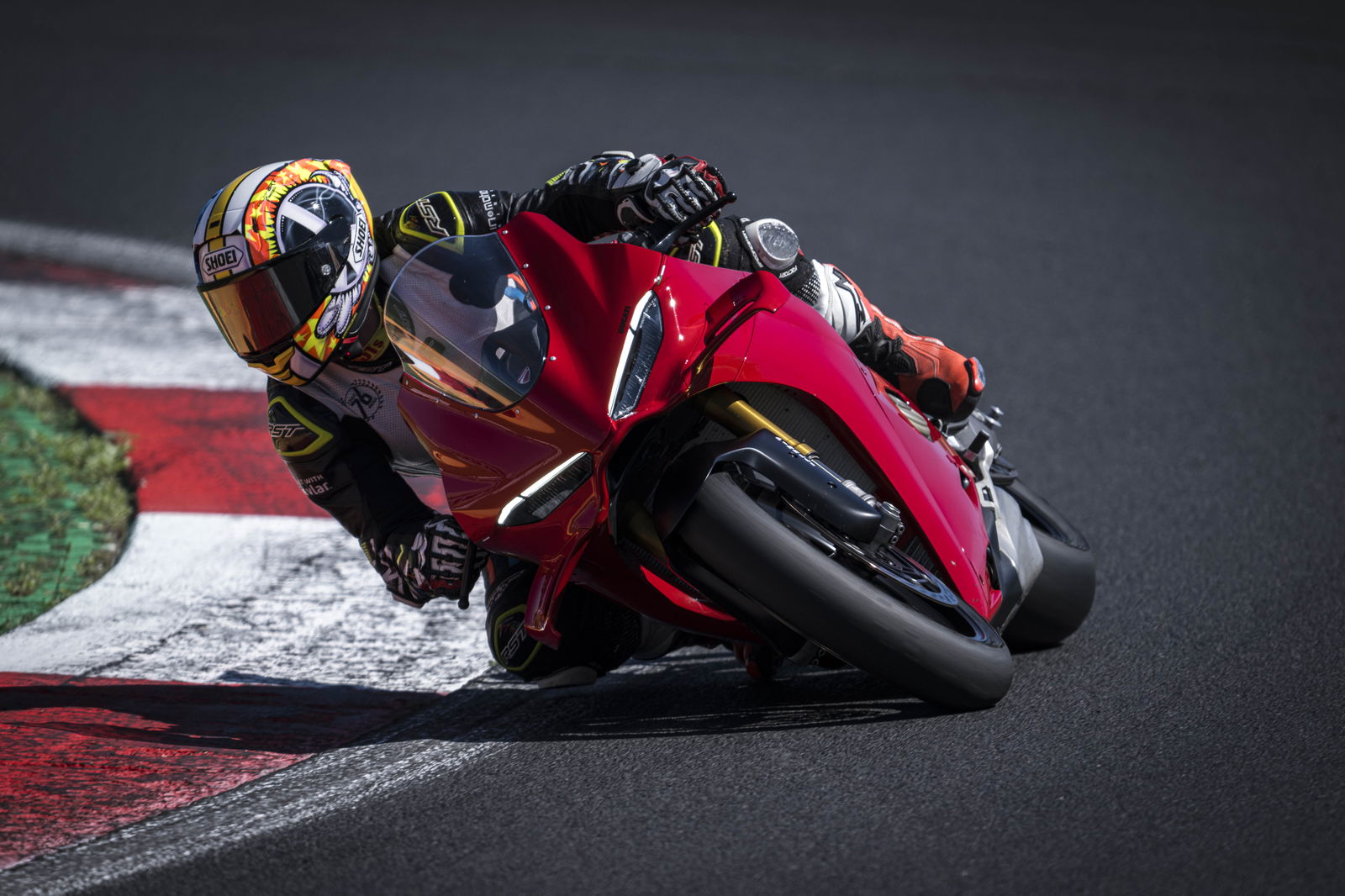
As mentioned, braking is now managed by new Brembo Hypure calipers, and also the new Race eCBS combined ABS system. There are seven levels of ABS, with level 1 the dedicated Race eCBS. This new system combines the front and rear brakes so that even when you release the front brake and arrive at a corner apex, it continues to trail the rear brake, without any rider intervention. With DVO ensuring it won't lock or slide the rear wheel while working out the fastest, safest braking strategy for the corner, you can, in theory at least, steer and lean to the apex. According to Ducati, a trailing rear brake tightens the line and adds stability mid-corner and, most important of all, makes you feel like Ducati Corse's double world champion Pecco Bagnaia.

The older Panigale was impressive on the brakes, but the combination of the Brembo Hypure stoppers and new technology is a hugely potent package. You can take real liberties on the brakes: brake so late it’s physically painful; brake so late and with so much power up to the apex it’s almost hard to comprehend and calculate. Meanwhile, the revised and more supportive shape of the petrol tank and relatively wide bars allow you to prepare for and absorb the stopping power, and the only weakness in the braking system I could find was the disappointing level of fitness of the test rider.
Back in the pits, data also showed how the system was adding 11 bar of pressure on the rear brake into T8 whereas before I was only using 3 bar of pressure – nowhere near the limit. In fact, the system was adding more brakes without me noticing and therefore reducing my stopping distance, which is as stunningly impressive as it is slightly disconcerting.
I became an instant convert to eCBS and now, with my helpful engineer, started to explore the active Öhlins suspension. I had already tried the pre-programed Active Track 1 and 2 modes but now had the opportunity to try a bespoke Active Track 3, a self-created setting saved into the bike. Francesco and I simply went up from level 3 to 4 on the front fork, and 4 to 5 on the shock, with brake support, mid-corner, initial acceleration, acceleration, and steering damper all remained the same as Active Track 1, the most track focused setting.
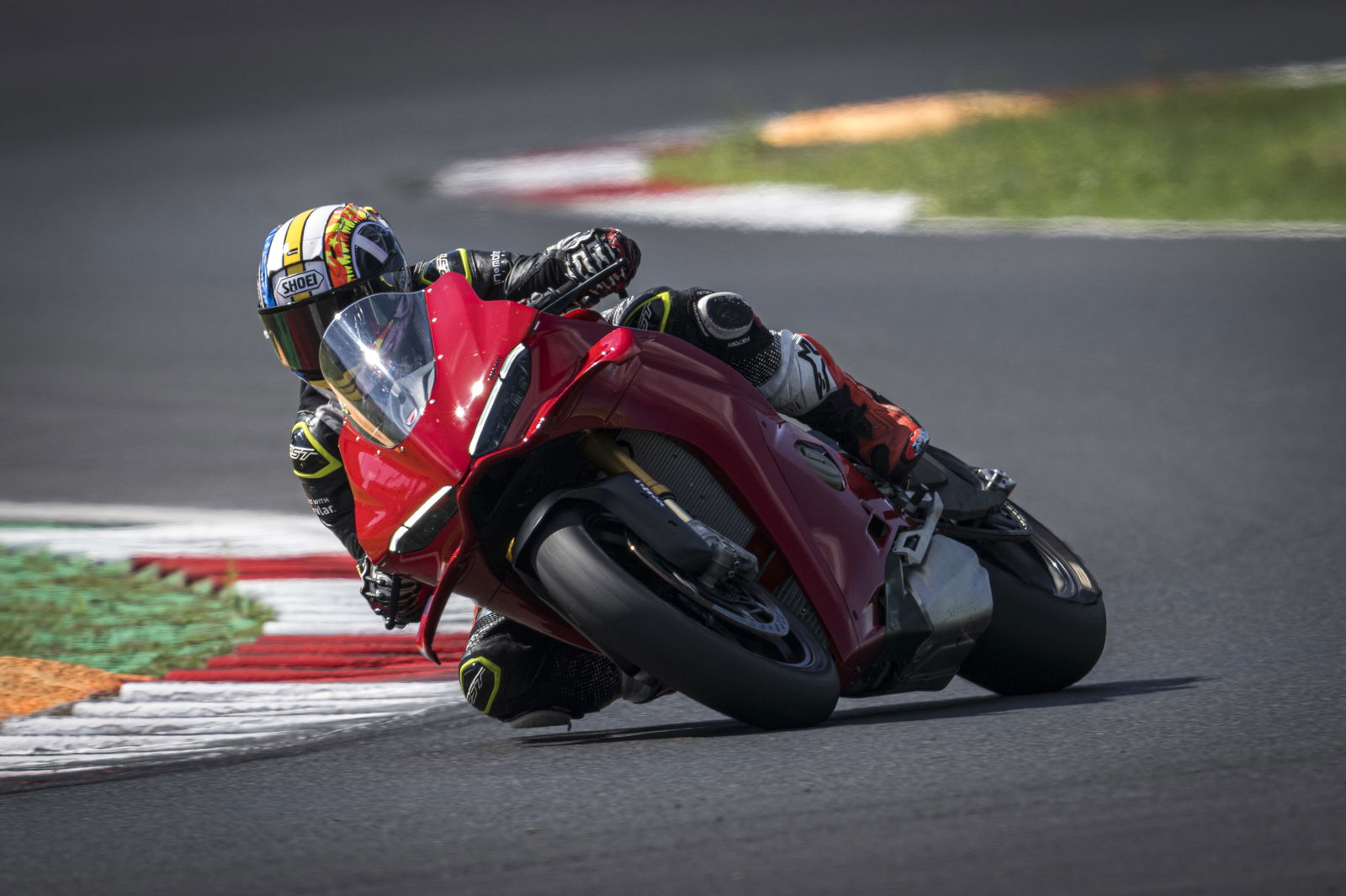
With this added support, the most noticeable change was to the initial turn-in to the apex and slow speed cornering. The steering was more accurate and I was clipping apexes with more consistency and precision, able to hold a tighter line. These seemingly small changes significantly changed the speed of the steering.
With only two more sessions to go, I was desperate to forget the lap timer for a while and simply enjoy the new Panigale and have some elbow-dragging fun, which is what the Ducati does so well. Yes, you can chase lap times, but as it’s now so much easier to ride fast you can also maintain both a pace and safety margin higher than you thought possible while still having trackday fun.
The astonishing level of grip from the chassis, rider aids and big slick Pirelli rubber allows crazy lean angles. If you ever want to get your elbow down – this is the bike to try it on. The new bodywork and fuel tank shape encourages you to hang off the inside MotoGP style. No bike I have ridden before feels so natural or relaxed at radical lean angles.
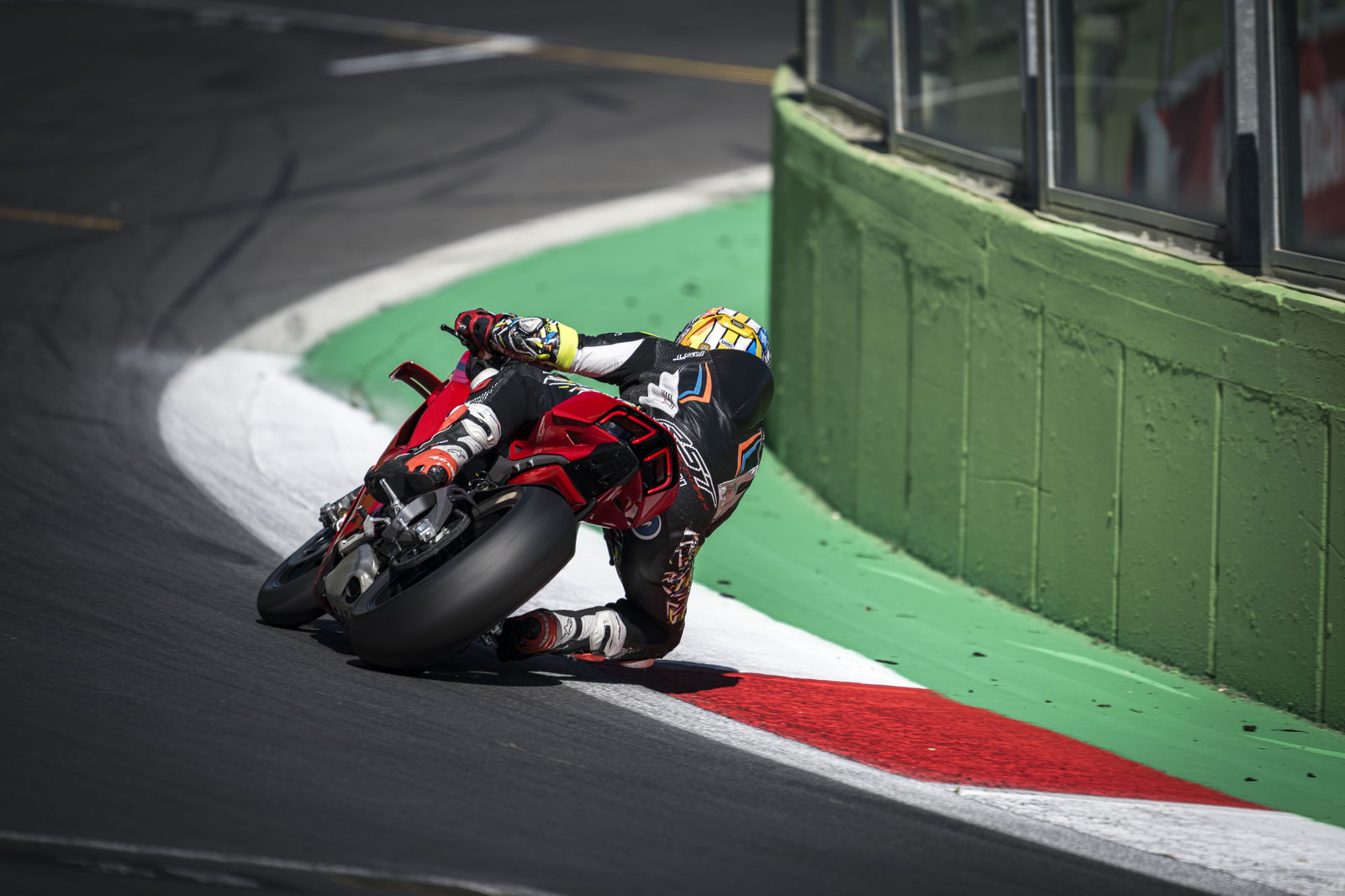
The chassis feedback is forensic. You feel in tune with the chassis, understand completely the Pirelli rubber and elevate your riding too. Sometimes electronic suspension can dilute the connection with the bike, but this is not the case on new Panigale.
For the last session of the test I opted for Full power rather than High power, which is automatically set in Race A mode. Full power is more aggressive in first and second gear, but near identical to Race A from third gear onwards, and with better precision and more fluidity, more usable than the older Panigale's equivalent mode.
We also decided to remove the wheelie control (for. ahem, photographic reasons, mainly), which made the Ducati harder and more tiring to ride but far from wheelie prone. This may be due to the longer wheelbase and new swing arm, plus the new wings, perhaps, and the fact that the power is higher up in the rev range.
Verdict
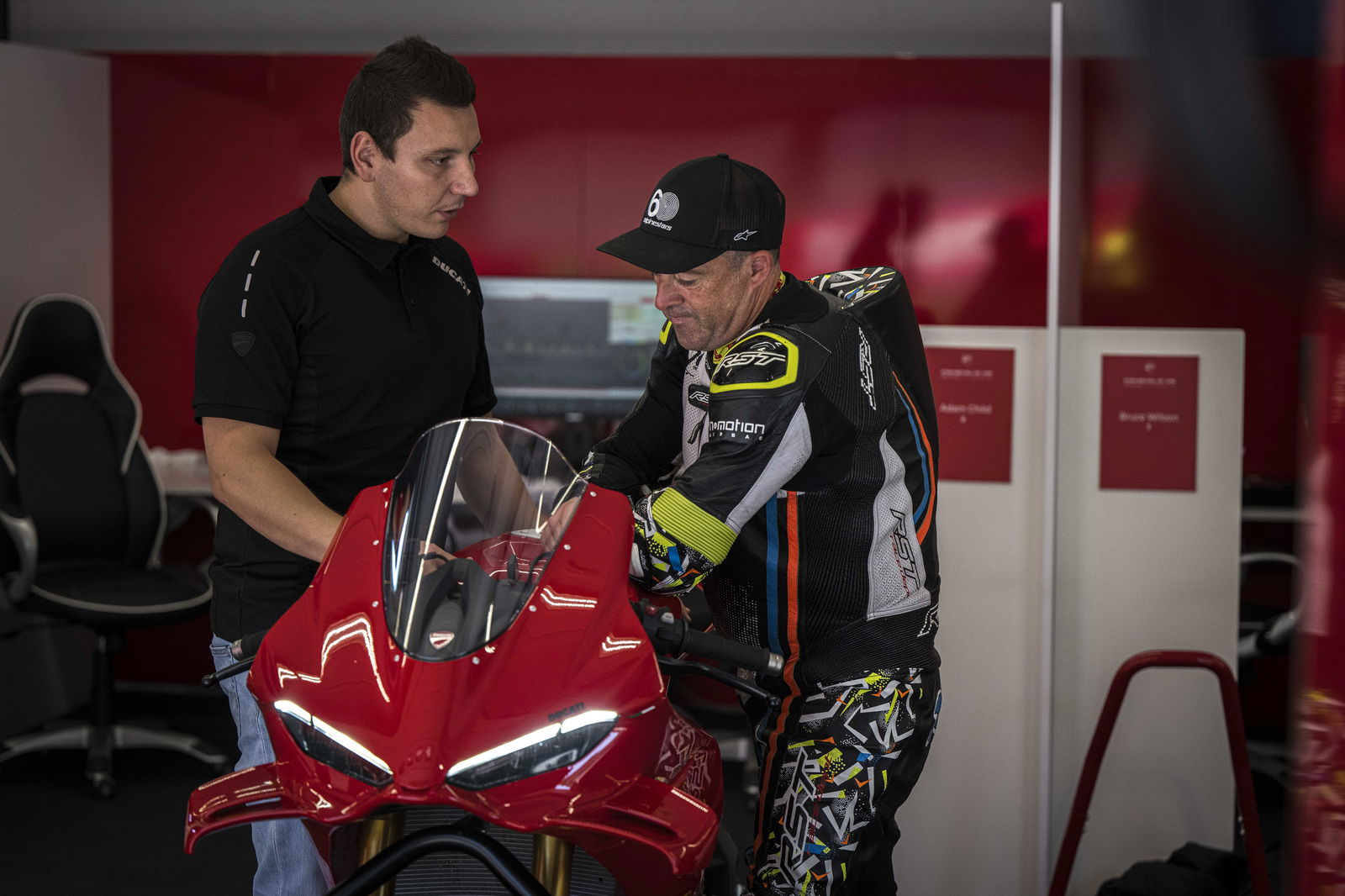
So, what has all this intense testing and adjustment taught us about the new Panigale V4 S? Beyond the lap times, it’s clear that Ducati has made substantial progress in terms of feel and handling. The 2025 model is more stable, planted, and significantly easier to ride. Where the previous version might have required calming shortshifts, especially when exiting fast, sweeping corners, the new Panigale demands full throttle, unleashing every bit of its Italian horsepower without hesitation. This newfound confidence translates into faster lap times.
The advancements in rider aids and braking technology are truly remarkable. No Ducati superbike has ever been this easy to ride consistently and safely. You can push the limits, relying heavily on the bike’s rider aids—a shift in mindset that allows you to do things you wouldn’t ordinarily attempt. The Panigale flatters the rider, enhancing lap times and making track riding more enjoyable. In short, it makes you faster.
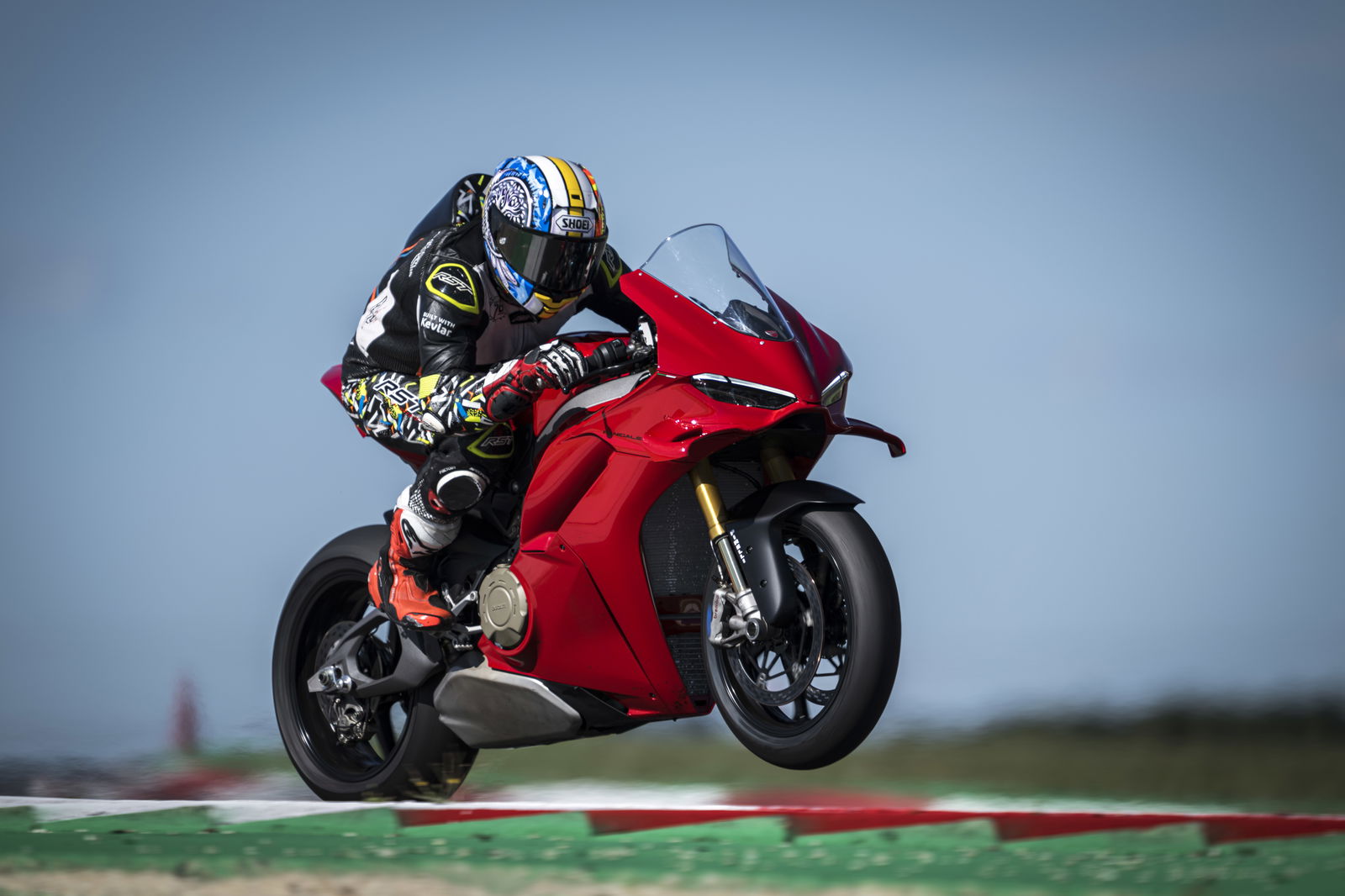
While we’ve yet to test the new Panigale on the road, it’s worth noting that all this cutting-edge technology comes at a price. In the UK, the V4 S now approaches £30,000, a £2000 increase over the previous model. It’ll be interesting to see how it fares against strong competitors like Honda and BMW.
But if I were the competition, I’d be worried. Ducati has taken race-winning MotoGP and WSBK expertise and brought it to their road-going superbike, allowing riders to feel like elite racers. The result is nothing short of stunning.
Is the Ducati Vehicle Observer (DVO) any good?
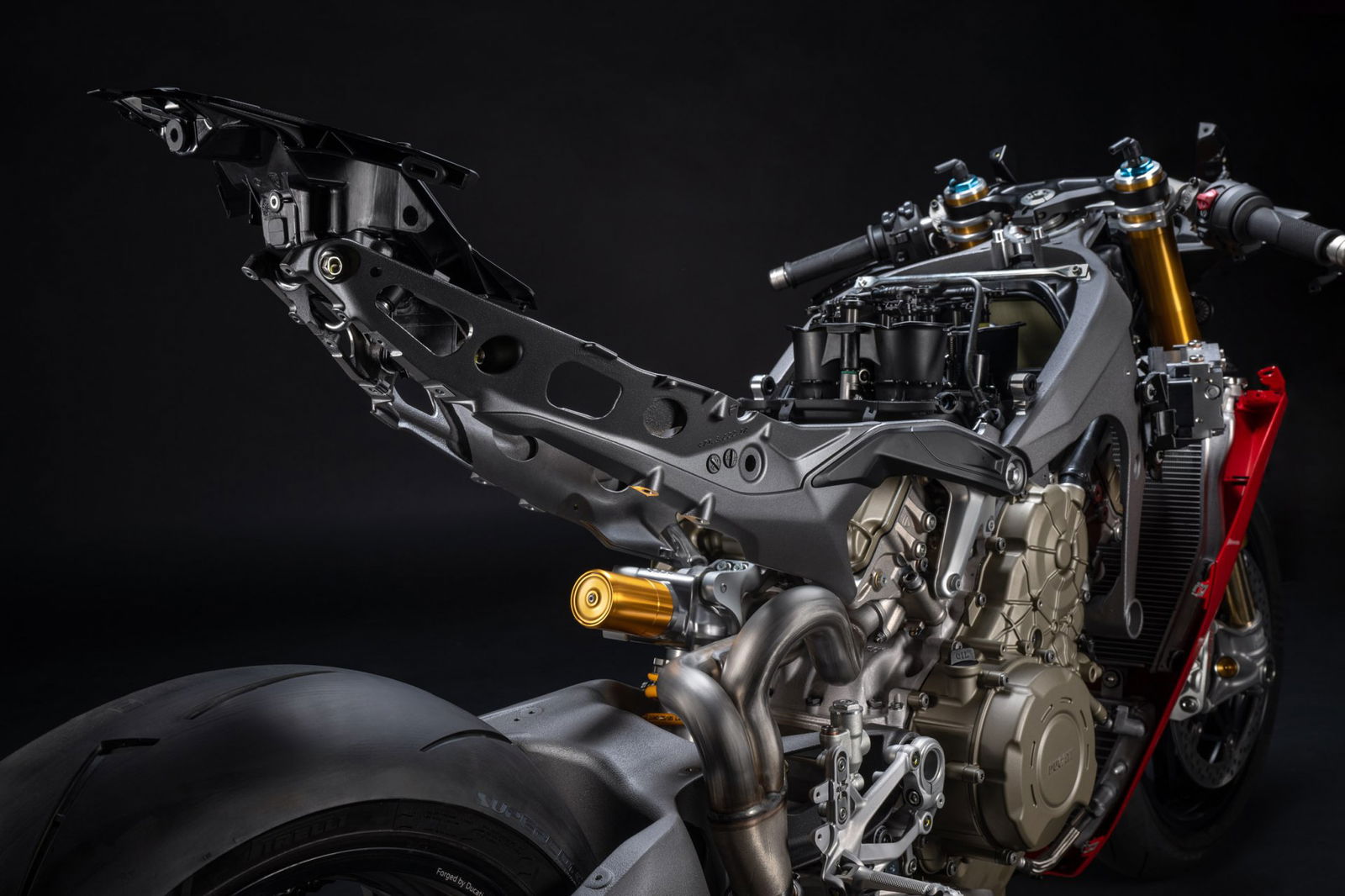
Developed by the boffins at Ducati Corse, DVO simulates the input of over 70 sensors, refining and optimising the rider aids strategy, like slide control or wheelie control. Via calculations, algorithms and knowledge from years in racing, DVO can ‘estimate’ loads and ground forces – grip levels for example – whilst also taking actual data form the IMU. Ducati haven’t fitted 70 actual sensors, these are simulated sensors to refine the rider aids.
Ducati have been using a similar system in MotoGP and have gathered endless data, which can now be transferred to the road bike. This allows the rider aids to work more efficiently, quicker and adapt better to your riding.
An example: the road-going Panigale doesn’t have a potentiometer to measure suspension, like the race bike. But when the system detects heavy or extreme braking (front brake pressure, deacceleration, a closed throttle, etc), it knows how the forks will react by using past data, knowledge and calculations. Yes, DVO is brilliantly clever but, that said, using past data and information I know I will have a hangover if I drink eight pints of Guinness, as I’ve done it before. So, I'm pretty bright, too.

